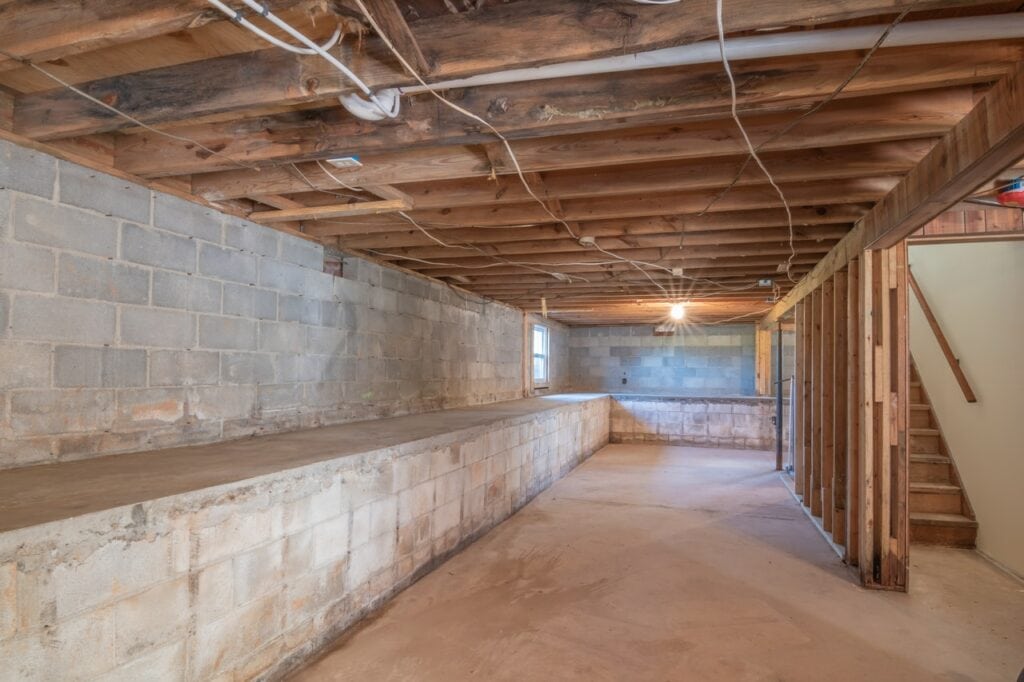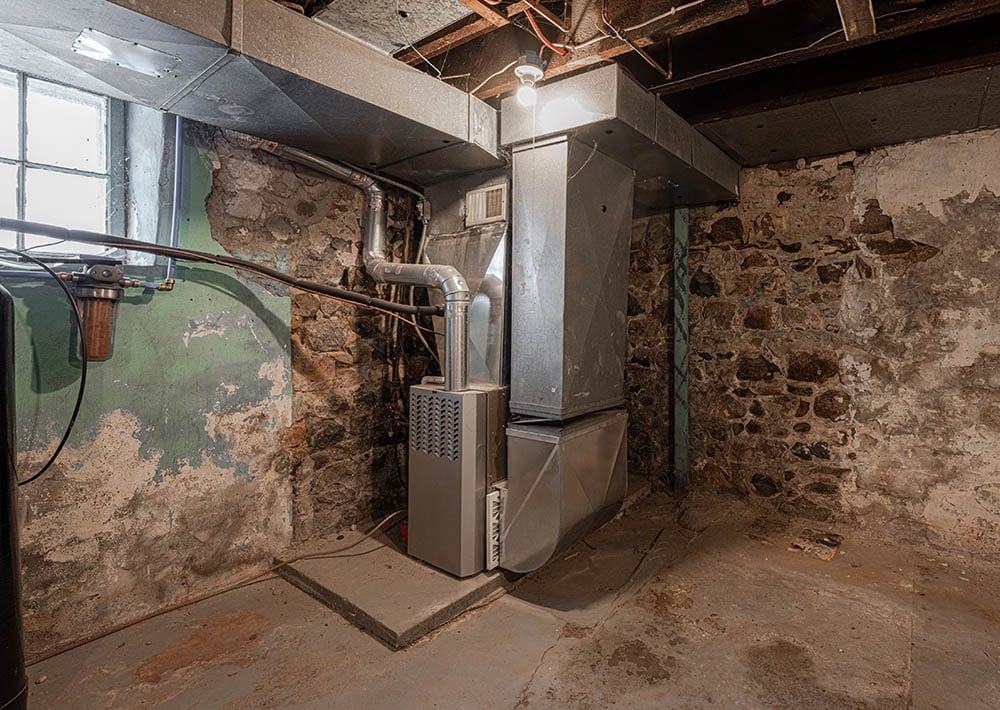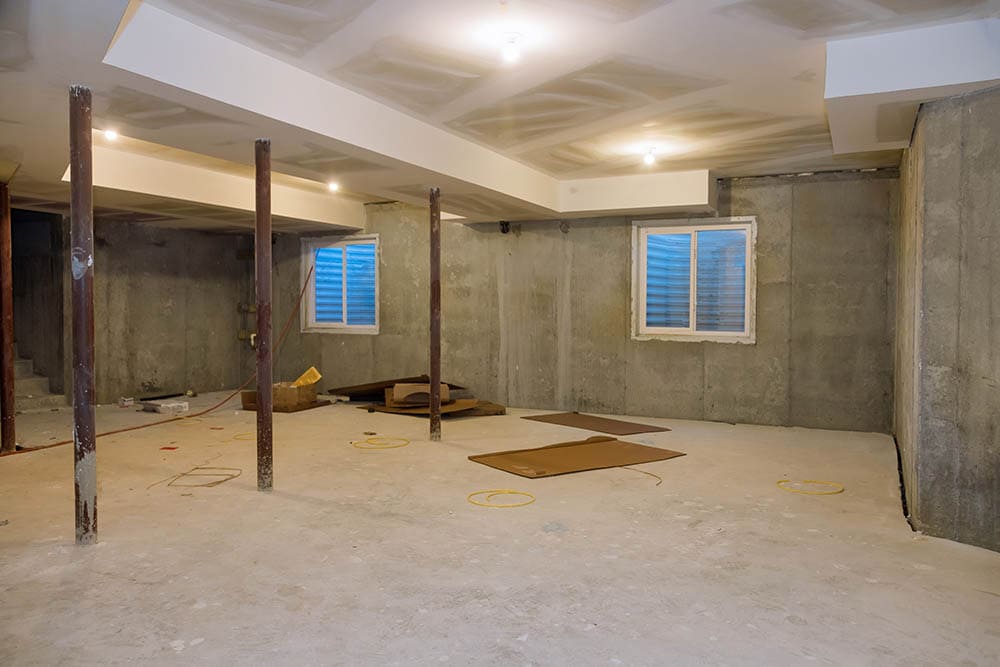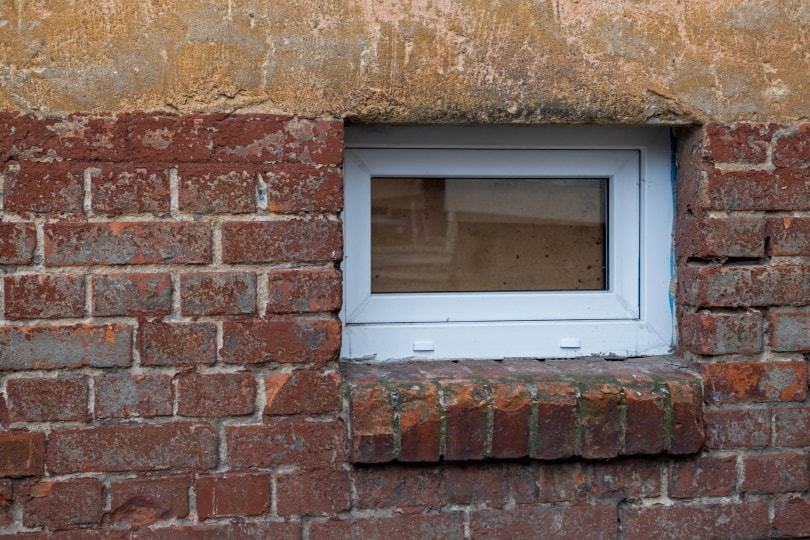What Is a Slab Basement? Alternatives, Pros, Cons, & FAQ
-
Pete Ortiz
- Last updated:

If you ever come across the term “slab basement” in the listing of any house, then it simply means that the building has no basement; instead, the entire foundation of that building lies on the slab of concrete.
A slab basement is the simplest kind of foundation used in a building. It is a thick concrete slab on which a house is built. You know what they say—a house is only as good as its foundation.
One of the most important factors of a building is its foundation. Every building has a foundation, and there are various types. The type of foundation used in the erection of a building is dependent on several factors. Nevertheless, the foundation is very crucial and should be properly studied before either buying or building a house.
How Slab Basements Are Made
First, all electrical connections, pipes, sewers, and other plumbing fittings that need to be placed in the foundation are laid. Next, in special preparation, gravel is laid up on the surface. Finally, concrete slabs that are about 6–8 inches thick are poured, embedding all fittings into the concrete. The concrete poured on the floor of the slab basement also acts as the floor of the basement.
After the concrete is poured, a scoreboard is then used to smooth the surface, removing every imperfection. Large sediments are pushed down closer to the earth’s surface while sand, water, and cement are brought up to the surface of the slab.

Alternative Options for Building Foundations
Crawl Space Foundation:
In the crawl space foundation, exterior concrete walls raise the bottom of the house about 18 inches above the ground. The space created underneath is enough to allow pipe fittings and other components to be passed underground after the concrete walls have been raised.
Full Basement Foundation:
These are the most expensive foundation used in buildings today. The room created in the building of this basement is deep and wide enough to contain people and turns out to become a basement in a home.

Can a Homeowner Choose the Best Kind of Foundation to Use?
If you are buying a home, you do not have a choice to make concerning the foundation type. However, if you have a home being built from scratch, then you can be involved in the decision-making process.
- Soil type
- Climate
- Water table
- Drainage
- Location accessibility
- Frost line
- Lot grace and stability
- Cost
Slab, Crawl Space, or Basement?
| Slab | Crawlspace | Full basement | |
| Climate | Warm and dry | Flooded and wet | Cold climates |
| Cost | Least expensive | Less expensive | Expensive |
| Space availability | None | Little | A lot of space is available |
| Construction speed | Very fast and easy | Requires more time and more skills to build | Takes the longest time and needs the highest qualification |
| Typical use | Dry areas | Typically used in areas with high moisture where water is likely to gather | Best used in areas with low water tables and settled soil |
The Best Place to Use a Slab Basement
A slab basement is best used in places that have warm and dry climates where the tendency for the foundation to experience freezing and thawing is very low. Grounds that constantly freeze and thaw can cause cracks in blocks; we do not want this to happen to our slab basement. Since it is also cheaper, it is best used when one is building on a budget.

Advantages of Slab Basement
Here are some of the pros of using a slab basement as a foundation type in a building:
- Easier and less expensive: Not much procedure is required to build a slab basement. The steps are simple and fast, and it does not take long before the concrete dries. This facilitates the building process. If you are looking for a quick and efficient way to build a house, the slab basement might be the perfect option for you.
- Fewer expenses: One of the major considerations when building a house is the cost. There is no budget for a basement in this type of foundation, therefore saving cost. Also, fewer materials are required to build a slab basement, and since the procedure does not take much time, the cost of labor is also greatly reduced.
- Reduced risk of flooding in the building: Since there is no space underneath, the chances of water entering and staying in the building are very little. Also, gas leakage is unlikely.
- Unlikely pest invasions: Houses with basements are more likely to get infested with pests since the wooden parts are exposed and can attract insects to chew on them. With a slab basement, there is little to no access to the underground.
- Easy access for physically challenged people: Since the ground floor of houses with slab basements are built very close to the ground, there is hardly a need for anyone to take many steps before accessing the building.
- Slab crack: A slab crack is one of the most destructive effects on a slab basement. A single crack in the slab can affect the structure of the entire building. In addition, fixing this crack can be very expensive since the procedure is tedious. The worst part is that the slab crack is beyond human control. It can result from strong tree roots, frozen grounds, or an earthquake.
- Extra insulation is required: Since pipes and wirings are run directly through the ground, they must be properly insulated to prevent them from changing temperature due to proximity to the ground.
- Cooler temperature: You might need to spend more money on heating as the home is likely to be cooler. This is due to the contact with the ground, especially in cold seasons.
- No extra space: People with basements can testify that their basements have saved them a lot of storage space. Basements are multi-purpose, and houses that do not have them tend to be lower on space availability.
FAQs
1. How Can I Tell if a House Is Built on a Slab?
Slab basement houses rest directly on the ground, so there is no space underneath them. If there is no basement or crawl area between your building and the foundation, then the house has a slab basement.

2. Can I Add a Basement to a House on a Slab?
Although very expensive, this procedure is possible. However, some considerations must be met before attempting to add a basement to a slab house. One of these is the building code of your state. Check with your building contractor to see that you are not breaking any regulations.
- Foundation erection
- Installation of drainage
- A lot of electrical and plumbing work
3. How Durable Is a Slab Foundation?
If built properly, a slab foundation can easily last for over 50 years. In addition, this foundation type requires the least maintenance.

4. What Is a Slab Leak and Can it Happen to My House?
A slab leak is the term used when the pipes that are running inside the cement slabs start leaking. Slab leaks are a result of corrosion from minerals running through copper pipes or a result of high water pressure.
- Uneven grounds
- Cracking grounds
- An untraceable sound of running water
If you notice any of this, contact a plumber immediately to rectify it, as a slab leak can be dangerous.
 Conclusion
Conclusion
Every home needs a foundation, and the type is dependent on some of the factors stated in this article.
If you are building your home from scratch, then you will be involved in deciding on the type of foundation. Weigh your pros and cons, and check with your building contractor to determine the most suitable foundation for your building.
- See also: What Is a Slab Basement? Alternatives, Pros, Cons, & FAQ
Featured Image Credit: curtis-adams, Pexels
Contents


